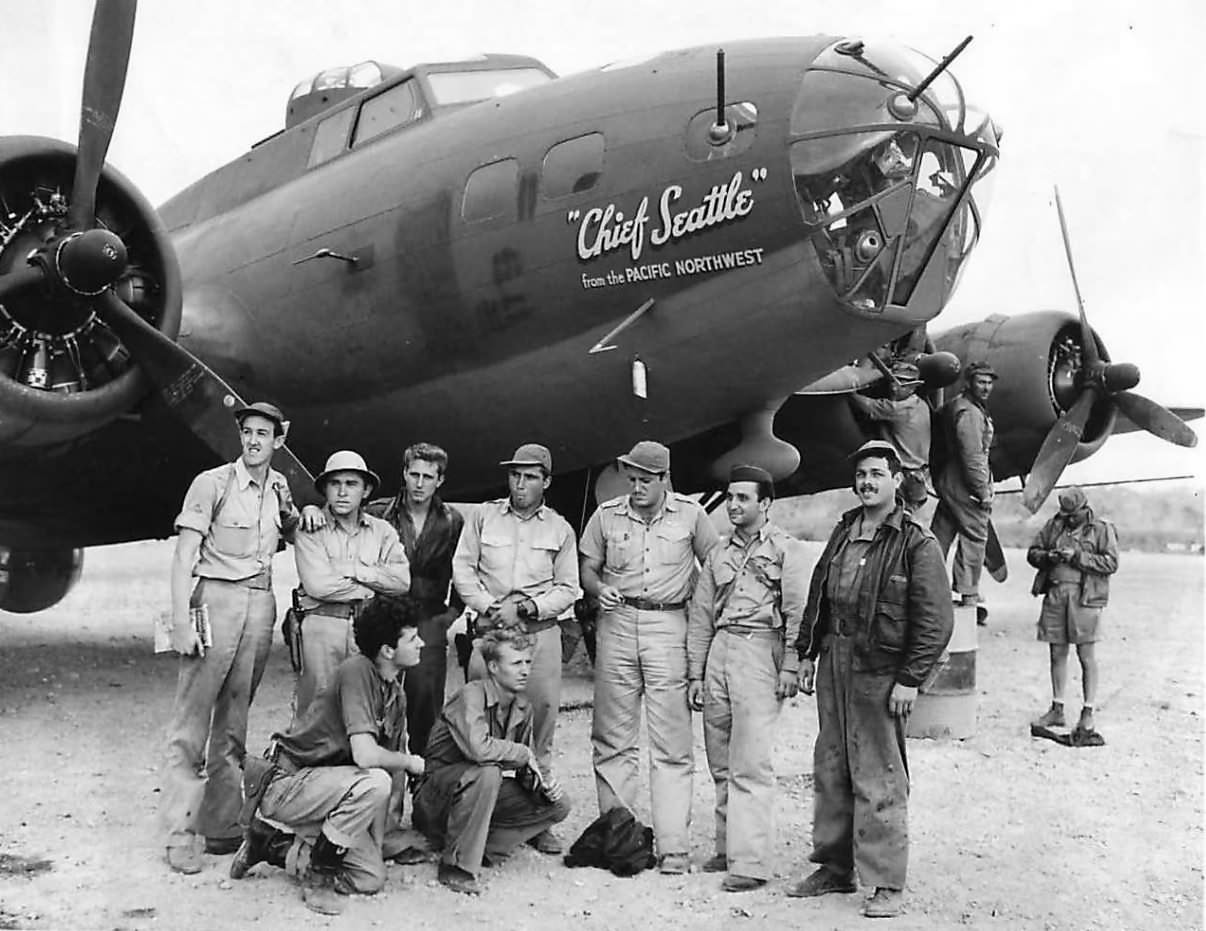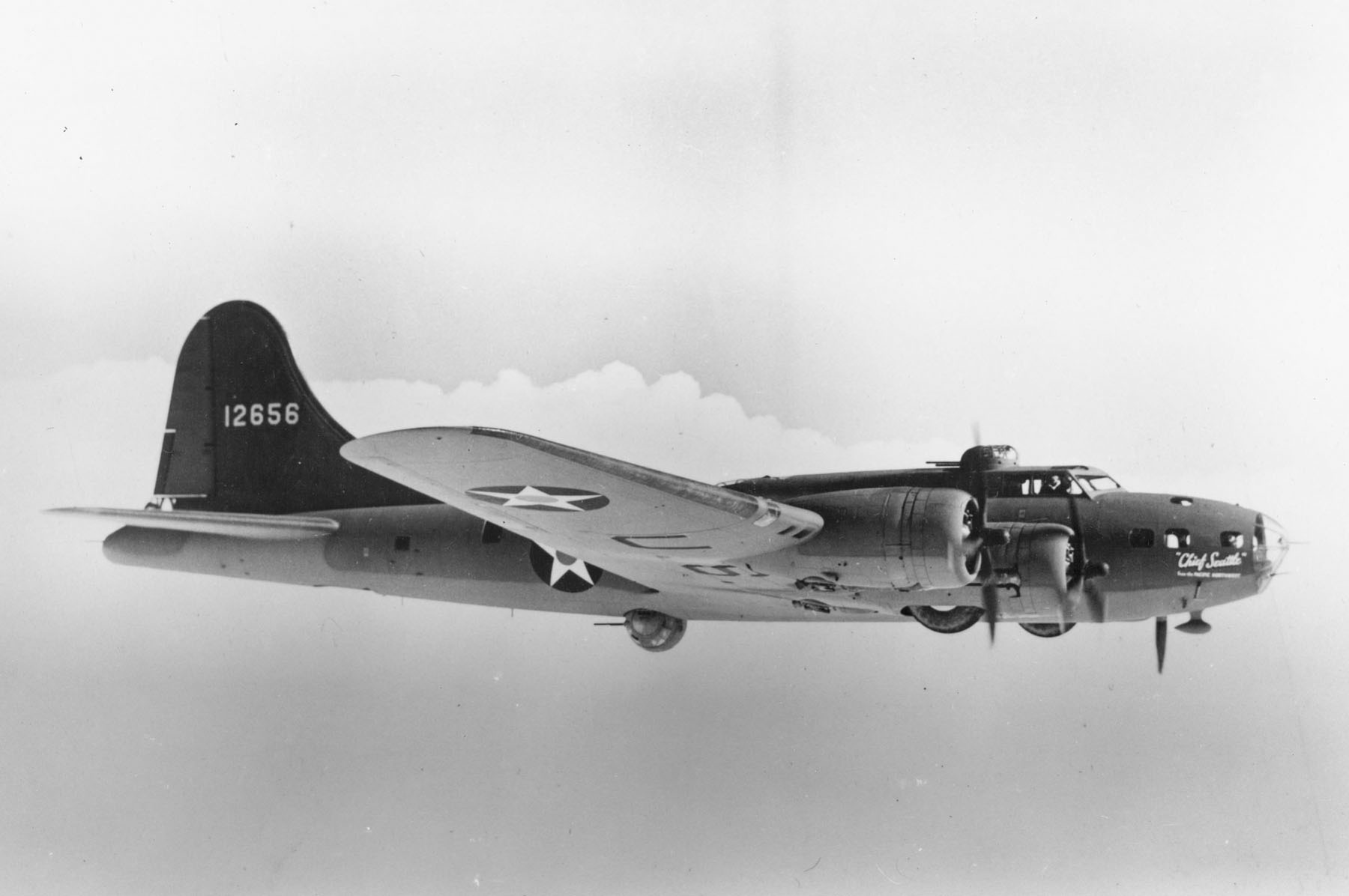Real American Heroes: the lost crew of CHIEF SEATTLE
Before dawn on 14 August 1942 a lone B-17 Flying Fortress taxied to the end of the runway at a remote jungle airstrip seven miles from Port Moresby, New Guinea to scout for Japanese shipping. Aboard are four veterans of the attack on Pearl Harbor, a Royal Australian Air Force copilot, a former cavalry trooper, a Scottish gunner, and a navigator that, despite having just turned 21, was already a veteran of 45 sorties. The pilot runs up the throttles and the bomber disappears into the pre-dawn sky for a nine-hour reconnaissance patrol.
The crew will never be seen again.
Back on 6 December, Gen. “Hap” Arnold personally met with 16 B-17 crews that were departing Hamilton Field (Calif.) on a 2,400-mile leg to Oahu before reaching their final destination in the Philippines. He told them “War is imminent. You may run into a war during your flight.”
Hap was right. First to reach Hawaii was the San Antonio Rose, and copilot 2nd Lt. Wilson L. Cook quickly discovered they had flown into a hornet’s nest. They could see ships ablaze in Pearl Harbor and were receiving ground fire. Unarmed, they had to shake off nine Zeroes and by then were nearly out of fuel and badly shot up. Everywhere they tried to land was swarming with enemy fighters, so the pilot (1st Lt. Frank P. Bostrom) landed on a fairway at Kahuku Golf Course.
Aviation Cadet Hubert S. Mobley and Sgt. Irving W. McMichael crewed Naughty but Nice, which was another B-17 that arrived during the Japanese attack. Their pilot landed on a small, unpaved emergency fighter strip, where they loaded fuel, guns, and ammunition before flying to Hickam Field.
Sgt. Elwyn O. Rahier was on the ground when the Japanese attacked; his plane was undergoing repairs at Hickam when an enemy bomb hit their hangar. The bomb blast killed two soldiers and wounded four, including Rahier.
Following the attack on Pearl Harbor, the citizens of Seattle, Wash. raised over $280,000 during a war bond drive to purchase a B-17E, which was named Chief Seattle from the Pacific Northwest. The nearby Boeing plant completed assembly on Chief Seattle and it was delivered to the 435th “Kangaroo” Bombardment Squadron (Heavy), 19th Bombardment Group (Heavy), Fifth Air Force on 5 March 1942. On 9 August the plane flew its first combat mission, an eight-hour patrol over Rabaul and Kavieng, which Japanese troops had recently captured. Chief Seattle had to abort a second similar patrol two days later when it developed engine problems while enroute.

By 14 August, Another crew climbed into Chief Seattle once repairs were completed: pilot 1st Lt. Wilson L. Cook (Bradley, Okla.), Royal Australian Air Force copilot Flight Sgt. George S. Andrews (Brisbane, Australia), navigator 2nd Lt. Hubert S. Mobley (21, from Tampa, Fla.), bombardier 2nd Lt. Joseph R. Cunningham (25, from Travelers Rest, S.C.), engineer Staff Sgt. Elwyn O. Rahier (28, from Morrison County, Minn.), assistant engineer Staff Sgt. John J. Dunbar (Tujunga, Calif.), radio operator Tech. Sgt. Irving W. McMichael (Lincon, Neb.), assistant radio operator Cpl. Charles M. Hartman (21, from Gettysburg, S.D.), gunner/anti-surface vessel (radar) Pvt. David B. Beattie (Glasgow, Scotland), and gunner Cpl. Richard K. Pastor (Lynbrook, N.Y.).
Mobley, McMichael, and Rahier were part of the mission to evacuate Gen. Douglas MacArthur from the Philippines. Incidentally, Lt. Bostrom, who landed his B-17 on the golf course, was the pilot for the B-17 that carried MacArthur.
Hartman’s love of horses drove him to join the 11th Cavalry Regiment before the war. Once the unit was deactivated, he transferred to the Army Air Corps. He volunteered for the mission since one of the crew was sick. Beattie was born in Scotland, but his parents moved to Michigan when he was young.
Once Chief Seattle left the air field, nothing was ever heard from them. They were on their own for the next nine hours. Japanese records indicate that a flight of Zeros intercepted and shot down an American bomber over the Solomon Sea at 0735 — about the same time Chief Seattle should have been overhead according to her flight plan. They state that one of the Zeros was heavily damaged by machinegun fire but the plane managed to return to base.
There was only one American B-17 lost that day, so it’s most likely that Japanese guns got the bomber. Sadly, few pictures or details exist for these men that flew dozens of missions. They are among the countless American airmen lost during World War II. We will never know what happened to the crew of Chief Seattle; their fate is known only to God. But these men, willing to go behind enemy lines — alone — to provide reports on enemy activity, are unquestionably true heroes.
“I waited that evening until long after there was no hope, long after I knew their gas would be gone,” wrote squadron mate 1st Lt. John T. Compton. “Then my hope was that they had landed somewhere on some other island and would be safe. Days, weeks, and now months have gone by. Nothing was ever heard. No radio contact was ever made. Where these brave boys may be or what their fates might be, whether lives have been spared we do not know. But of the things we are sure, that there are no greater men than those who give their lives in war that we may live out in Peace.“

That’s an awesome mental image… Like the movie FIELD OF DREAMS, only with bomber crews instead of baseball players. Loading up their plane and headed back out. If you don’t turn that into a book and movie I will sir. Thank you for your service sir.
As a Vietnam war era veteran we salute you for serving your country and hopefully one day you will just show up and land in San Francisco airport needing fuel, ammunition and bombs
Looking to get back in the air to fight for freedom,